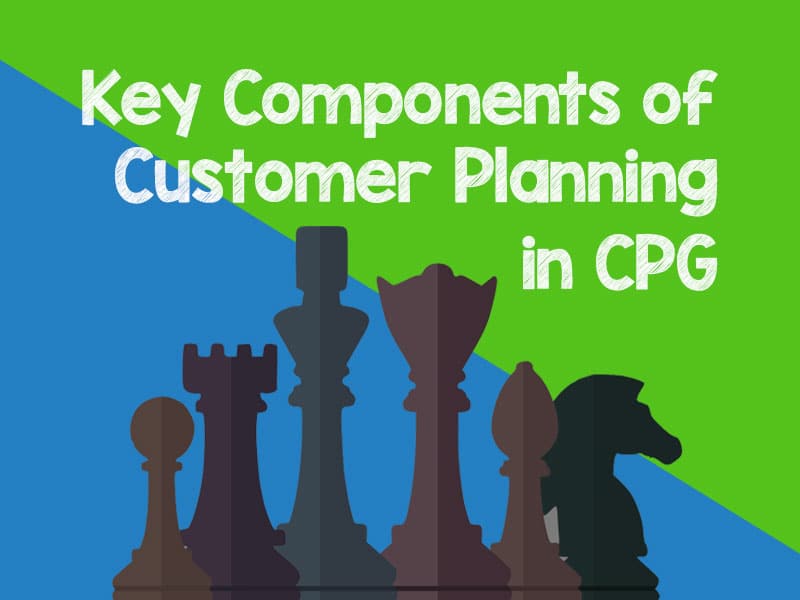
Customer planning sounds as easy as deciding who will stock your household cleaner and then providing it! Unfortunately, it’s more complex than that, so we’ll break it up into:
- Creating an annual customer (retailer) plan
- Preparing for a retailer meeting
- Making an accurate forecast
Customer Planning: Create Your Annual Plan
There are several steps to this.
1 Set Goals
Define your objectives for the year, such as increasing sales, expanding distribution, launching new products, improving brand visibility, or strengthening relationships with retailers.
2 Analyze Your Market Landscape
Include CPG trends, consumer preferences, and competitors – and opportunities for, and challenges to, your brand’s performance.
3 Understand Retailer Needs
Who are your target retailers? Consider their customer base, store formats, geographic locations, and overall business strategies.
4 Develop Strategies
Work out strategies to address the above – ensuring they align with your brand’s UVP and competitive advantage.
5 Sales and Marketing Plans
Detail should include
- pricing strategies,
- promotional campaigns,
- trade marketing initiatives, and
- any necessary support or incentives for retailers.
6 Assortment and Merchandizing
Evaluate your CPG product range and develop recommendations for optimizing it to meet retailer and consumer demands in the year ahead. Consider product mix, packaging, planograms, and shelf placement.
7 Financial Projections
Estimate the financial impact of your customer plan, including sales forecasts, budget allocation, and expected ROI. This helps justify your initiatives and supports negotiation with retailers when you meet them (see below).
8 Monitor, Review, Adjust
You can now implement your finalized customer planning in collaboration with your retail partners. Monitor its effectiveness regularly against predefined metrics, and adjust flexibly based on
- market dynamics,
- retailer feedback, and
- performance indicators.
Customer Planning: Prepare For a Retailer Meeting
Retailer meetings are crucial to effectiveness.l Here are some tips.
1 Gather information about any new retailer, including their background, store formats, target customers, and current product offerings. Understand their CPG market positioning.
2 Be prepared to discuss how your products meet the retailer’s needs and add value to their customers. This means being thoroughly familiar with your own product portfolio!
3 Determine the specific outcomes you want to achieve – maybe negotiating terms, discussing promotional opportunities, or addressing retailer concerns.
4 Remember your USP! And clearly communicate this as a benefit for the retailer, such as sales growth, increased foot traffic, or differentiation from competitors.
5 Have answers in mind to possible retailer questions, concerns, or objections about, for example,
- pricing,
- competition,
- product availability, or
- logistics
6 Provide product samples, brochures/case studies, and market research data to add persuasive visuals to your words.
7 Will you negotiate? If so, contemplate your desired terms, your bottom line, and any solution that benefits both of you!
And – adjust all the above tips to each specific retailer on your customer plan!
Customer Planning: Make an Accurate Forecast
Despite what you arrange with each retailer, your customer planning includes making financial forecasts. You have your plan, you’ve agreed which retailers to work with – so here are key steps to creating a forecast.
>> Review historical data, noting trends, seasons, and significant promotions that affected them.
>> Understand broader demand patterns in your CPG category: changing customer preferences, economics, and emerging market segments.
>> Keep up regular communication with your retailers to make use of their local expertise, insights, and forecasts.
>> Factor in
- any planned new product or promotion,
- the effect of ad campaigns, and
- new regulations coming into force, global events, etc.
>> Revise your forecasting flexibly each quarter, via lagging and leading indicators, to reflect your annual plan and inventory management.
Momentum CPG Can Help You With Customer Planning!
Customer planning is part of your sales strategy. At Momentum CPG, our leadership experience covers every channel, retailer, market, and category. Why not schedule a consultation today and achieve next-level growth? Let’s talk!